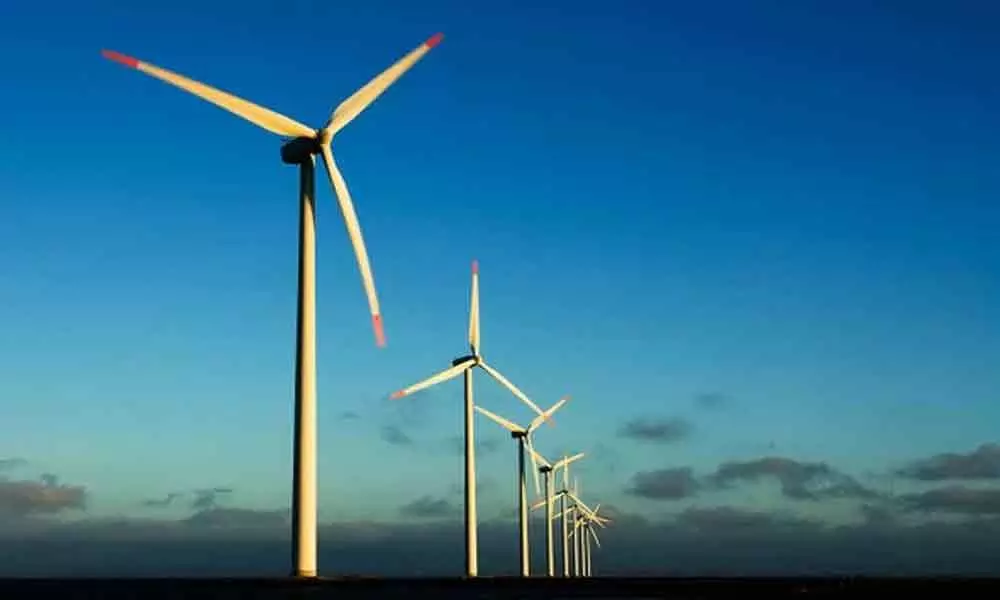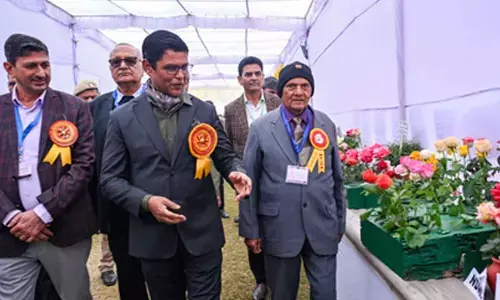Switch to clean energy could employ 5mn north Indians by 2050: Report

Switch to clean energy could employ 5mn north Indians by 2050: Report
Finland's Lappeenranta-Lahti University of Technology (LUT) and Delhi-based 'Climate Trends' in a new report on Tuesday established how northern India's energy systems, comprising the world's largest metropolitan area -- Delhi-NCR -- can be switched to 100 per cent clean energy by 2050.
New Delhi:Finland's Lappeenranta-Lahti University of Technology (LUT) and Delhi-based 'Climate Trends' in a new report on Tuesday established how northern India's energy systems, comprising the world's largest metropolitan area -- Delhi-NCR -- can be switched to 100 per cent clean energy by 2050.
The study finds that greenhouse gas (GHG) emissions in northern India can be reduced from 825 metric tons of carbon-dioxide equivalent (MtCO2eq) in 2020 to zero by 2050 across all energy sectors as well as create five million new jobs.
Presented at the virtual World Solar Technology summit organised by the International Solar Alliance, the study was a first of its kind modelling that uses geospatial and hourly-demand analysis to design a cost optimal energy system in the future.
Manish Ram, a lead author of the report said,"The study highlights how low-cost renewable electricity could emerge as the energy carrier of the future for India with an integrated energy system across the sectors of power, heat, transport and industry."
"A first of its kind study provides an economically viable integrated energy system model for power, transport and other energy consuming sectors that will bring multiple benefits of more jobs, better industrialisation and cleaner environment."
Christian Breyer, a professor for solar economy at LUT University, said,"Globally, the costs of solar and wind energy have been rapidly declining in recent years. Energy systems are poised to be transformed with high shares of renewables having solar energy and battery storage as the backbone, the study highlights for north India."
This research shows how to get one of the largest metropolitan area in the world -- Delhi-NCR -- get sustainable energy by mid-century.
Titled "Building Blocks of India's Energy Future -- North India's Energy Transition based on Renewables", the study models the transition is not only technically and financially feasible but the deep de-fossilisation of northern India's energy system would also generate five million jobs by 2050, compared to nearly three million jobs in 2020 with the current fossil-based energy system.
Aarti Khosla, Director, Climate Trends, told IANS, "India's economy is heavily dependent on traditional fossil fuel energy but this reliance is now crippling the environment and economy."
"This study shows clearly that as the country undertakes a Covid-led economic recovery, a vision of an integrated energy system is possible. It is also the one that is desirable. In northern India, 63 per cent of electricity comes from coal. Though, in the last few years India has improved its decarbonisation trajectory, there are some states in the northern grids which are still lagging behind."
She said during the lockdown when the electricity demand dropped significantly, renewable energy sources dominated the energy supply mix as coal power plants struggled to maintain the plant load factors.
"This is the right time for accelerating electrification with low-cost renewable electricity as an energy carrier," an optimistic Khosla added.
The report takes into account India's heavy GHG emissions, rising demand for power and its acute vulnerability to water stress, and lays out a possible roadmap for the country to meet its emissions reduction targets under the 2015 Paris Climate Agreement.
It is focussed on eight states and Union Territories. They are Jammu and Kashmir, including Ladakh, Himachal Pradesh, Punjab and Chandigarh, Uttarakhand, Haryana, Delhi, Rajasthan and Uttar Pradesh and models the transition of the energy-intensive sectors of transport, power, heat and desalination away from fossil fuel and nuclear power.
Tim Buckley, Director of Energy Finance Studies with IEEFA, said, "It's clear that solar is the least cost source of new energy supply and the outlook is for a continuation of some 10 per cent annual deflation over the coming decade making the financial case ever stronger."

















